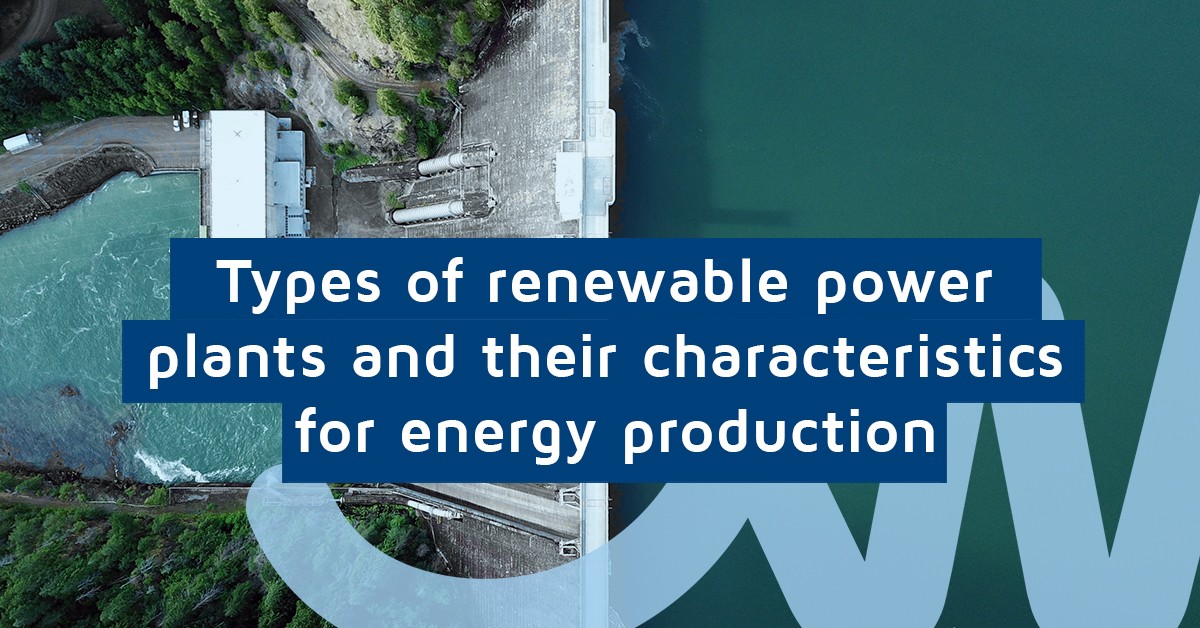Types of renewable power plants and their characteristics for energy production
Knowing where the electricity we consume in our homes comes from is becoming increasingly important. Moreover, the events of recent years have led to an even more significant intensification of efforts to achieve energy independence for our country through the use of renewable sources.
According to data published by Red Eléctrica de España in the Spanish Electricity System Report, in 2021, renewables produced 46.7% of our country's total electricity, with the wind being the primary source of electricity generation in Spain with 23.3% of total production.
In this post, we will talk about some types of renewable power plants and their main characteristics in producing energy. Renewable power plants are characterised by generating clean energy through natural sources, such as the sun or wind. Their variety makes it possible to choose the most suitable for any location, the main ones being:
Types of renewable energy power plants and their characteristics
-
Wind farms.
This type of wind farm requires large areas of land and is usually installed in unpopulated areas with abundant wind resources. They have a tower that can reach 100 meters, blades that can exceed 50 meters and are responsible for transmitting the wind's kinetic energy to the wind turbine. The blades rotate at a speed of between 13 and 22 revolutions per minute. Thanks to a multiplier element, it manages to transmit a rate of around 1,500 revolutions per minute to the wind turbine. The electrical energy is generated in direct current, and before going down the tower cable to the transformer at the wind farm's substation, a converter transforms it into an alternating current. -
Photovoltaic solar plants.
This type of installation uses the sun's radiation to generate electricity. The photovoltaic modules are made of a semiconductor material that, upon receiving photons of sunlight, releases electrons from its atoms. The semiconductors usually used are crystalline silicon (C-Si). These negatively charged electrons are attracted to the positive side of the doped cell, generating an electric current. The inverter is another crucial element of these parks, as it transforms the direct current produced by the panels into alternating current, suitable for increasing the voltage and distributing it. -
Hydroelectric power plants.
Traditional power plants make use of the potential energy of water stored in dams. To do this, the water is lowered through a pipe to the turbine, connected to an alternator, generating electrical power. -
Thermal power stations.
The operation of these plants is based on the heating of a fluid through a heat exchanger using different thermal sources, mainly fuels, to produce a phase change. The working fluid, in a gaseous state, is driven towards a turbine, causing it to move. Turbines are composed of high, medium, and low-pressure sections, which optimise the transformation of thermal energy into mechanical energy. In turn, the turbines are connected to alternators, which are responsible for converting the turbine's mechanical energy into electrical energy by means of a phenomenon known as electromagnetic induction. Subsequently, the voltage of the resulting electrical power is raised in a substation to be suitable for injection into the electricity grid, thus minimising losses during the transport phase.
- Biomass. The energy released during the combustion of organic matter (forestry, agricultural waste, crops, etc.) is used to heat a working fluid. This changes to a gaseous phase as the temperature rises and causes the movement of a turbine. The kinetic energy of the turbine is converted into electricity by an alternator and then fed into the grid.
- Solar thermal. This type of power plant comprises solar concentrators, a mirror placed on the ground whose mission is to concentrate as much solar radiation as possible and project it towards the receiver. Sometimes these plants also have a thermal storage system to produce electricity during the hours when there is no solar radiation. Once the working fluid has been heated, and a change to a gaseous phase has been achieved by concentrating solar energy, the gaseous fluid circulates through a turbine connected to an alternator to generate electricity.
- Geothermal. They take advantage of the Earth's internal energy in the form of heat generated in the subsoil, which is not equally efficient in all countries. Thus, the geothermal gradient is more significant in places with great tectonic activity, such as Chile or Indonesia. Therefore the energy that can be extracted per unit of land is greater. There are several types of geothermal power plants. Still, the most common are open-cycle and closed-cycle and operate through pipes that extract a mixture of steam and water from the subsoil. However, in other cases, a secondary fluid is used, as the water is high in Sulphur and therefore corrosive to the pipe system. This fluid is then separated, the dry steam is sent to a turbine, and the water is returned to the ground via a pump system to be converted back into steam. The turbine drives an alternator which is responsible for generating electrical energy. -
Marine power plants.
These are installations that use the force of the sea to produce energy. The largest marine power station in Spain is in Mutriku, Guipúzcoa. This plant was inaugurated in 2011 and can produce 600,000 kWh per year. The most common maritime power plants are:
- Marine current power plants. They harness the kinetic energy of the movement of ocean currents to move a turbine and generate electricity. Their environmental impact is less than the construction of hydroelectric power plants, as they do not require dam construction.
- Wave power plants. They operate by harnessing the movement of waves. Water enters a chamber, and its force helps compress the air inside, which exits through an orifice into a turbine. When the tide withdraws, the air is sucked out to generate electricity again.
When you subscribe to the blog, we will send you an e-mail when there are new updates on the site so you wouldn't miss them.

